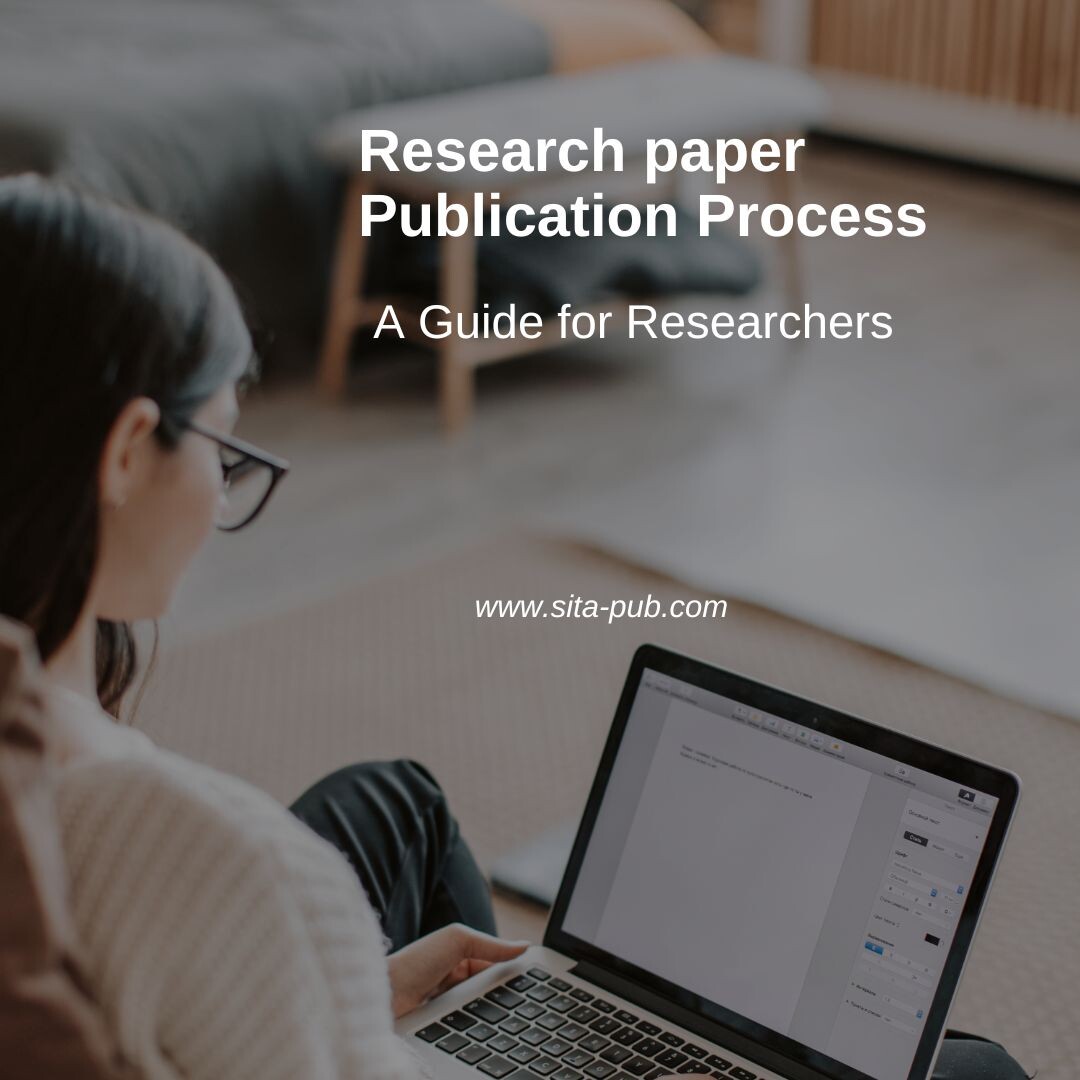Research paper Publication Process: A Guide for Researchers


Publishing your research is significant in the academic journey. It is the testament to your hard work and a crucial means of sharing your discoveries with the world. While the procedure may look challenging, understanding the process can change it from a challenge to a gratifying experience. This comprehensive guide will provide you with the knowledge and strategies you need to successfully publish in a reputable publications like Scopus-indexed, peer-reviewed journal.
The journey to publication begins long before you even start writing. A well-planned research project is the cornerstone of a successful manuscript.
Start with a topic that genuinely interests you and aligns with your expertise.
Gather relevant data, conduct experiments, or analyze existing information to support your claims.
Articulate your central argument or hypothesis clearly and concisely. Your thesis statement should provide a clear direction for your investigation and ensure your findings are focused and impactful.
Structure your research into a logical flow, typically including an introduction, methods, results, discussion, and conclusion.

With your research foundation laid, it's time to translate your findings into a compelling and well-structured manuscript.
Engage your reader by introducing the topic, stating your research question, and providing context for your study. Highlight the significance of your research and its potential impact on the field.
Summarize and analyze existing research relevant to your topic. This section demonstrates your understanding of the current state of knowledge and establishes the unique contribution of your research.
Describe your research methods, materials, and procedures in detail. Clarity and transparency allow readers to understand how you conducted your research and assess the validity of your findings.
Present your findings clearly and objectively, using tables, figures, and statistical analysis as needed. Visual aids can enhance the readability of your results, making your data accessible and impactful.
Interpret your results, discuss their implications, and compare them to existing research. This section is where you delve deeper into the meaning of your findings, highlighting their significance and potential applications.
Summarize your key findings and restate your thesis. End your manuscript with a strong conclusion that leaves a lasting impression on your reader.
Provide a complete list of all sources cited in your manuscript. Accurate and consistent referencing is crucial for maintaining academic integrity and ensuring the credibility of your research.

Choosing the right journal for your research is a crucial step in maximizing its impact and visibility.
Identify Relevant Journals:
Focus on journals that publish research in your field and align with your target audience. Consider the journal's scope, its readership, and its reputation within your field.
Review Journal Guidelines:
Familiarize yourself with the journal's submission guidelines, formatting requirements, and word limits. Adhering to these guidelines ensures your manuscript meets the journal's standards.
Consider Impact Factor:
The impact factor reflects a journal's influence and can impact the visibility of your research. While not the sole determining factor, a higher impact factor can increase the reach of your work and its potential for citation.

You've chosen the perfect journal for your research, and now it's time to ensure your manuscript is presented in its best possible light. By precisely addressing formatting, plagiarism, editing, and proofreading, you significantly increase your chances of acceptance.
Each journal has specific formatting guidelines that must be followed. Failing to do so can lead to immediate rejection.
Read the Instructions Carefully: Thoroughly review the journal's submission guidelines, paying attention to: Font ,Margins ,Line Spacing, Heading Levels ,Citation style (e.g., APA, MLA, Chicago) and Figures and Tables
Even if English is your native language, professional editing can improve the clarity and flow of your writing.
Seek Professional Editing: Consider hiring a native English editor specializing in academic writing. They can help refine your grammar, sentence structure, and overall writing style.
Plagiarism is a serious academic offense, and even unintentional instances can lead to rejection.
Use Plagiarism Detection Software: Run your manuscript through a plagiarism detection tool to identify any potential instances of plagiarism. Popular options include Turnitin and iThenticate.
Paraphrase Carefully: When paraphrasing, ensure you rephrase the original text in your own words and cite the source properly.
Proofreading is the final step in ensuring your manuscript is error-free.
Read Carefully and Focus on Details.
Get a Fresh Perspective: Have someone else proofread your manuscript to catch any errors you might have missed.
Submitting your manuscript to a journal initiates the peer review process, a rigorous evaluation by experts in your field.
Follow the journal's online submission process. Include that all required documents and information.
Reviewers will assess your manuscript's quality, originality, and relevance to the journal's scope. Their feedback, while sometimes critical, is valuable in improving your research.

The peer review process is often iterative, requiring revisions and resubmissions to address reviewers' concerns.
Carefully consider the reviewers' feedback and revise your manuscript accordingly. Engage with their suggestions constructively, using their insights to strengthen your arguments and improve the clarity of your research.
Submit your revised manuscript to the journal. Address all reviewer concerns and highlight the changes you've made. A well-crafted response letter explaining your revisions can further enhance your manuscript's appeal.
The journal will either accept or reject your manuscript. While rejection can be disheartening, it's an opportunity to learn and refine your research for future submissions.

Once your manuscript is accepted, the final stage of publication begins. Your manuscript will be published in the journal, either online or in print. This marks the culmination of your research journey, making your work accessible to a wider audience.

SITA Academy is your guide to navigating the complex world of academic publishing. We understand the challenges that researchers face, from writing a compelling manuscript to navigating the peer review process. Our expertise lies in streamlining the publication process, ensuring that your research reaches its full potential and increases its chances of acceptance in prestigious journals.
What services do we offer?
We recognize the unique challenges of publishing journal articles in a variety of fields, including social sciences. We work closely with researchers to help them understand and navigate the world of open access journals. We make sure their work meets the high standards expected by journal editors. Our dedicated customer service team provides personalized support throughout the publication process, ensuring a smooth and successful experience for each researcher.
If you have any questions, inquiries, or would like to learn more about our services, please don't hesitate to reach out to us. Our dedicated team is ready to assist you.
Why choose SITA?
